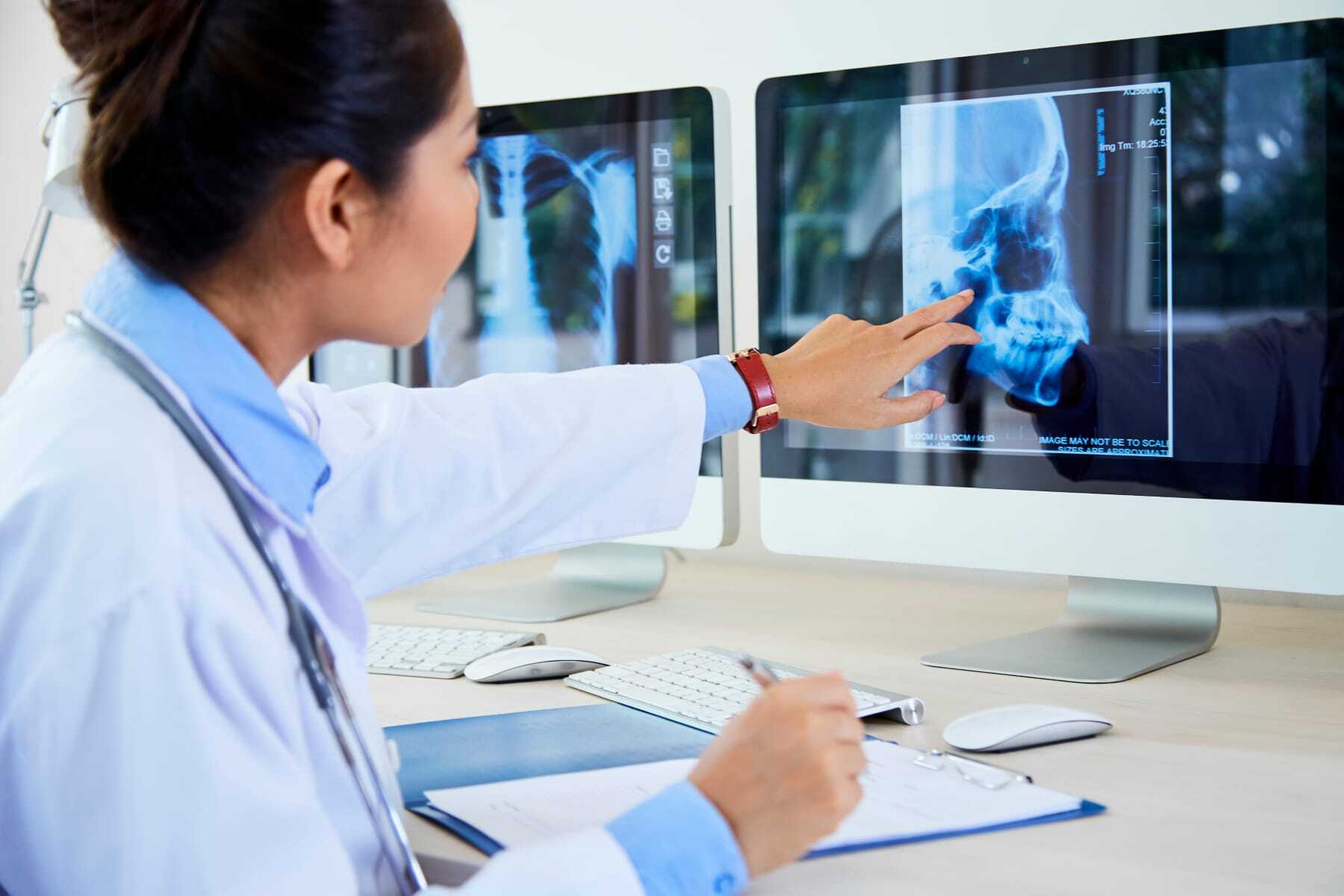
Admissions
Applicants who seek admission to the Associate of Applied Science in Radiologic Technology program should possess the intellectual, ethical, physical, and emotional capabilities needed to complete the curriculum and achieve levels of competence required by the faculty.
Technical Standards
Once enrolled, each candidate for the AAS in Radiologic Technology degree must be able, quickly and accurately, to integrate all information received, perform in a reasonably independent manner, and demonstrate the ability to learn, integrate, analyze and synthesize information and data.
We will make every effort to provide reasonable accommodation for physically challenged students. In doing so, however, we must maintain the integrity of the curriculum and preserve those elements deemed essential to the acquisition of knowledge in all areas of radiologic technology, including the demonstration of basic skills requisite for working as a Radiologic Technologist. Accordingly, we require each student to meet the following technical requirements:
Physical Ability
- Physical mobility is sufficient to walk, stand, squat, climb, kneel, bend, or twist as necessary to provide required patient care.
- Stand for long periods of time while wearing personal protective equipment that can weigh up to 25 pounds.
- Reach, manipulate, and operate radiographic and fluoroscopic equipment, which is above shoulder level (about 6 feet above the floor).
- Lift and carry at least 30 pounds of weight to safely transport and use ancillary aids (cassettes, sandbags, portable equipment, etc.) when performing radiologic procedures.
- Safely move standard wheelchairs and stretchers with patients from the emergency or waiting areas to radiologic examining rooms and safely assist mobile patients from the stretcher or wheelchair to the examining table and back, without assistance.
- Safely move immobile patients from stretcher to examining table and back with assistance from department personnel.
- Lift, manipulate, and move patients as necessary for the performance of radiologic procedures.
Visual Ability
- Sufficient in assessing patients, viewing monitors and patient positions, and performing procedures in dim lighting.
- Correctly read technique charts, read and select correct exposure factors at control consoles, and read and set correct distances and other equipment settings at the radiographic and fluoroscopic towers. Must be able to read various sizes of print located on equipment and computers.
- Visually monitor the patient for retention of correct position, correct breathing, motion, or evidence of physical or emotional distress during radiologic procedures, which includes working in dimly lighted environments or from across a room.
- Requirements for visual acuity are correctable near vision to 20/40 in both eyes and correctable far vision to 20/40 in both eyes.
Cognitive Ability
- Mental capability involves reasoning, problem-solving, planning, abstract thinking, complex idea comprehension, and learning from experience.
- Monitor and evaluate patients’ vital signs, including taking temperatures and reading standard thermometers, taking blood pressure, and monitoring respiration and pulse rate.
Auditory Ability
- Sufficient to monitor and assess patient needs.
- Monitor equipment and background sounds during equipment operation and report unusual or abnormal sounds to the appropriate person.
- Understand and correctly carry out oral instructions given by instructors and clinical personnel, including those where personnel are wearing surgical masks.
Communication Ability
- Sufficient for interaction with others in verbal and written form.
- Communicate clearly, both orally and in writing, with the patient, the patient’s family, clinical personnel, and others to obtain or disseminate information relevant to patient care and work duties.
Critical Thinking Ability
- Objective analysis and evaluation of an issue in order to form a judgment.
- Evaluate radiographs and digital images for technical quality, including visual perception of density levels, contrast levels, evidence of distortion, and evaluation of minute structural details for evidence of blur.
- Read and correctly carry out written instructions given on requisitions, treatment charts, notes, and other records.
Mental Acuity and Emotional Stability
- Demonstrate emotional stability and mental alertness in day-to-day interactions with patients, visitors, staff, and peers in high-stress/pressure situations that occur in the radiologic environment.
